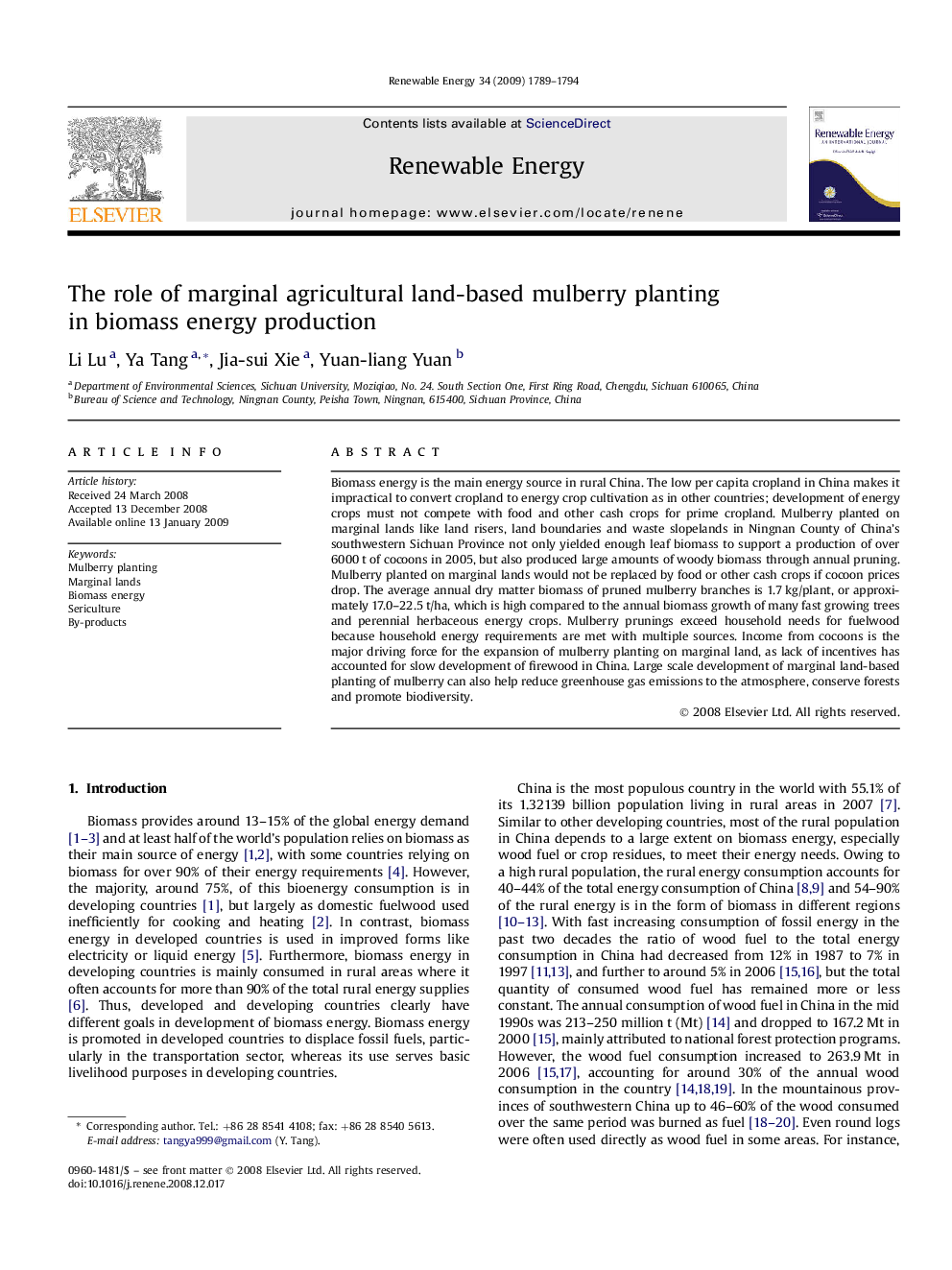| کد مقاله | کد نشریه | سال انتشار | مقاله انگلیسی | نسخه تمام متن |
|---|---|---|---|---|
| 302379 | 512537 | 2009 | 6 صفحه PDF | دانلود رایگان |

Biomass energy is the main energy source in rural China. The low per capita cropland in China makes it impractical to convert cropland to energy crop cultivation as in other countries; development of energy crops must not compete with food and other cash crops for prime cropland. Mulberry planted on marginal lands like land risers, land boundaries and waste slopelands in Ningnan County of China's southwestern Sichuan Province not only yielded enough leaf biomass to support a production of over 6000 t of cocoons in 2005, but also produced large amounts of woody biomass through annual pruning. Mulberry planted on marginal lands would not be replaced by food or other cash crops if cocoon prices drop. The average annual dry matter biomass of pruned mulberry branches is 1.7 kg/plant, or approximately 17.0–22.5 t/ha, which is high compared to the annual biomass growth of many fast growing trees and perennial herbaceous energy crops. Mulberry prunings exceed household needs for fuelwood because household energy requirements are met with multiple sources. Income from cocoons is the major driving force for the expansion of mulberry planting on marginal land, as lack of incentives has accounted for slow development of firewood in China. Large scale development of marginal land-based planting of mulberry can also help reduce greenhouse gas emissions to the atmosphere, conserve forests and promote biodiversity.
Journal: Renewable Energy - Volume 34, Issue 7, July 2009, Pages 1789–1794